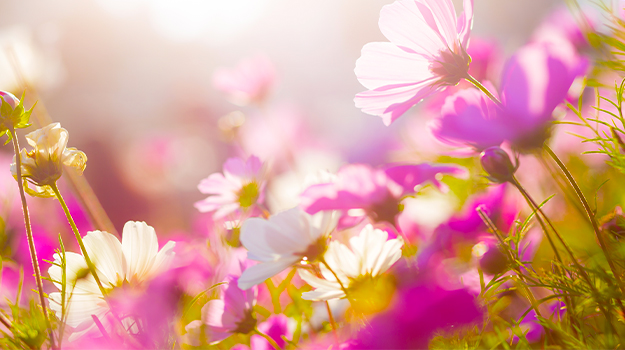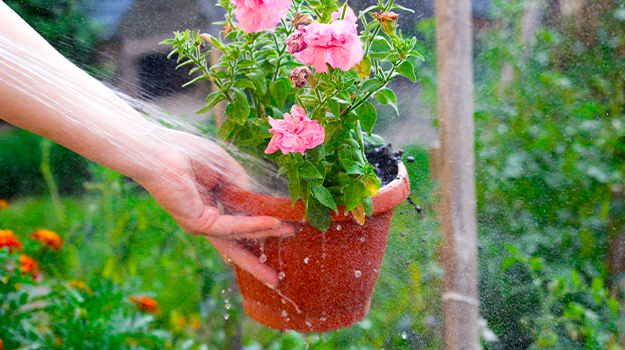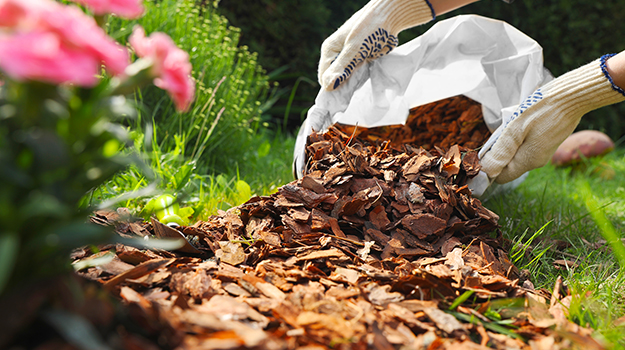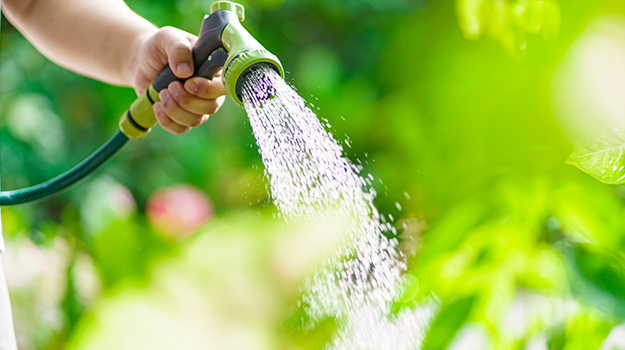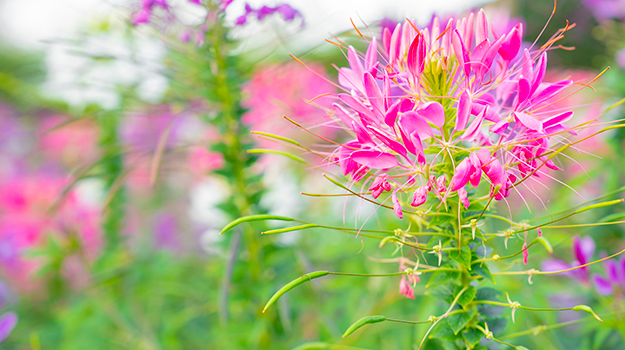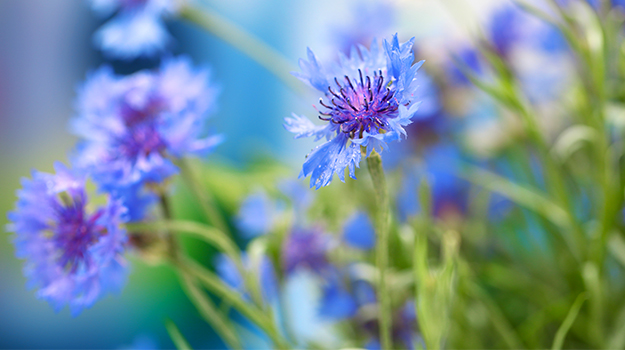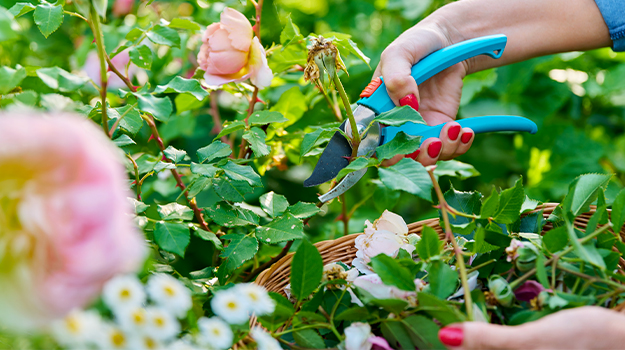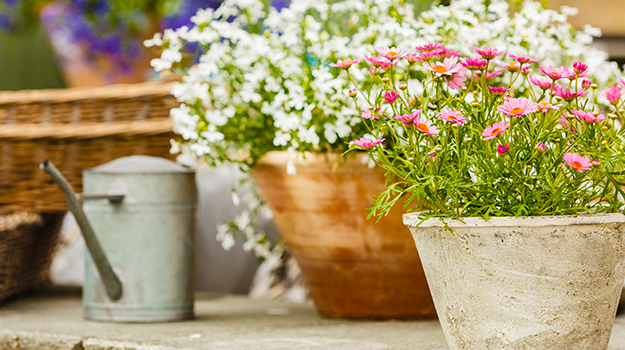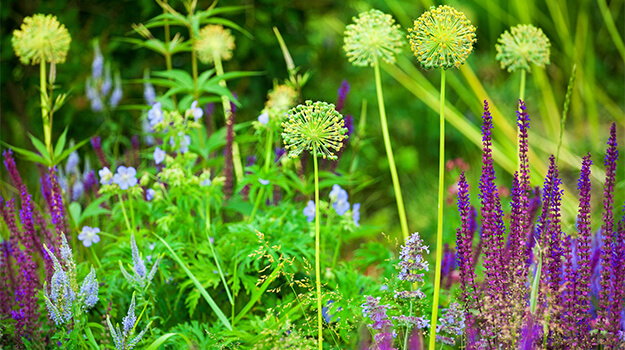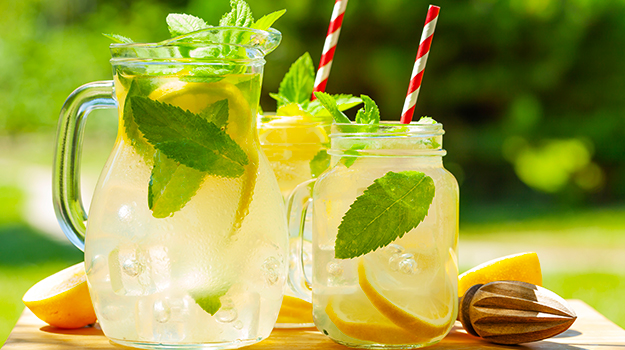When the heat sets in and rain is scarce, everyone suffers, even your garden. By keeping your soil moist and avoiding any activities that might stress your plants, such as transplanting, pruning or fertilizing, your garden will retain its appeal until the end of the season.
Here are 10 tips that will help your garden get through heatwaves and drought periods more easily.
- Check the soil’s humidity level
- Apply mulch
- Place your plants in full sun in the morning
- Rethink the way you water
- Opt for drought-resistant plants
- Amend your soil before heatwaves hit
- Avoid fertilizing
- Beware of the wind
- Do not prune your plants in hot weather
- Pay special attention to potted plants
1. Check the soil’s humidity level
You don’t need to water systematically once a day. Adjust watering according to your plants' needs. During hot weather, it may be necessary to water twice a day.
You can check the soil’s moisture level by inserting a finger 2 to 5 cm deep. If it feels dry, water!
Water preferably in the morning to give plants time to absorb moisture before temperatures rise. Watering in the evening is also a good option, but you'll put your plants at greater risk of contracting fungal diseases.
Avoid watering during the day as water evaporates more quickly. However, if your plants are drooping, wilting and showing signs of dehydration, it's best to water them at any time of day.
What are the signs that a plant needs water?
Pay close attention, as there are signs that it's already too late. Signs that your plant is thirsty include wilting (soft, drooping stems, leaves and flowers), browning and curling of leaf edges, soil that feels dry to the touch, slowed or stunted growth, and yellowing leaves.
2. Apply mulch
A thick layer of mulch protects plant roots and soil from extreme temperatures (this is true in both winter and summer). It helps keep the soil cool and delays water evaporation.
The ideal mulch thickness is 5 to 7 cm (7.5 cm for coarse mulches). Leave a gap near the plant crown to prevent disease and root rot. Add more mulch as the mulch decomposes and the layer becomes thinner.
As a bonus, when mulch decomposes, it helps improve soil quality. Adding organic matter helps improve the soil's water-holding capacity.
GOOD TO KNOW: Weeds compete with plants for water, space and soil nutrients. Another good reason to use mulch!
3. Place your plants in full sun in the morning
Give more heat-sensitive plants a break by planting them in areas where they'll benefit from some afternoon shade. You can also move potted plants during very hot weather. A little cool during the hottest hours of the day will be appreciated.
For plants grown in the ground, garden centres offer shade cloths that can lower temperatures by 10 degrees. They should not be placed directly on the plants, and there must be good air circulation. An adequate support must be built for them.
4. Rethink the way you water
From the beginning of the season, get into the habit of watering deeply (the soil should be moist to a depth of at least 15 cm). Watering abundantly but less frequently encourages deeper roots. This way, plants get used to drawing water from deeper down and suffer less during heatwaves.
Water at the base of your plants, if possible without wetting the flowers and foliage. Drip irrigation systems and soaker hoses are good options because they deliver water directly to the roots and prevent excessive evaporation. If you're using a regular garden hose or watering can, also water at the base.
Not only is watering more efficient, but it also reduces the risk of fungal diseases. For the same reasons, water in the morning!
5. Opt for drought-resistant plants
While many plants love hot weather, extreme temperatures aren't ideal for all. With heatwaves and droughts on the rise, adapting our gardens to climate change is becoming a necessity. This allows us to grow healthy plants that require less care and maintain their attractiveness throughout the season.
The list of drought-tolerant plants isn't limited to grasses, lavender and yucca. We've listed nearly 100 colourful plants of all kinds that definitely deserve a place in our gardens.
Download the list.
Read our article to learn how to create a stunning drought-resistant garden.
6. Amend your soil before heatwaves hit
In both the garden and vegetable patch, always use a high-quality potting soil rich in organic matter and absorbent materials that will retain more moisture. Sphagnum peat moss retains up to 80% of its weight in water.
If your soil is poor, adding compost or composted manure can improve its structure and its capacity to retain water.
For a ready-to-use solution, our garden mixes and vegetable & herb mixes contain sphagnum peat moss, peat humus, coir, perlite, compost, an organic fertilizer and mycorrhizae which promote the development of a strong root system.
TIP: Plants in sandy soil will need to be watered more often than those in clay soil, which retains more water. However, during drought, sandy soil will be easier to work. Once clay soil dries out, it is very difficult to dig into or incorporate organic matter. It is best to do this while it is still malleable.
7. Avoid fertilizing in hot weather
Feeding plants promotes growth. However, during heatwaves, adding fertilizer further stresses already struggling plants. During very hot weather, stop fertilizing and resume when temperatures return to normal.
TIP: Don't fertilize perennials after July! To learn when and how to fertilize as well as what to use, check out our exclusive guide.
8. Beware of the wind
Hot, dry winds dry out, weaken and damage plants and trees. The most fragile plants should be grown in areas sheltered from the wind. Shrubs, roses, trees and climbing plants will also survive the winter better!
9. Do not prune your plants in hot weather
During heatwaves, avoid pruning plants due to the stress they are already under. Moreover, the healing process increases the plant's water needs, which are not always satisfied.
In fact, pruning encourages the growth of new shoots at a time when the plant wants to keep its energy. Furthermore, removing branches or leaves instantly reduces the amount of shade available to the roots.
Heat can quickly dry out newly exposed areas and make the plant more vulnerable to pests and more prone to disease. Therefore, simply remove damaged or diseased parts, ideally in the early morning or evening when it is cooler.
10. Pay special attention to potted plants
Plants grown in pots have limited access to water and nutrients. Smaller, dark-coloured containers dry out quickly. Pay special attention to them.
Using the right potting soil, such as our Premium Potting Soil or our Organic Moisture Mix, helps retain moisture longer and limits damage from under or overwatering.
All pots that can be moved will find some cool in a shaded area of the garden. Larger containers can be placed on a dolly. If necessary, use a hand truck or wheelbarrow to shelter them while the heat passes.
Water them often and thoroughly, until the water runs out of the drainage holes. Grouping them together makes watering easier and saves time!
PRO TIP: Remember that too much water can drown your plants’ roots. Make sure the container you choose has large enough drainage holes and an adequate number of them. If you use saucers, be sure to empty any excess water.
Our tips for gardening during a heatwave
Even if it's terribly hot, some gardening tasks can't be put off. Here are some tips, this time for gardeners, to help you get through the heatwave.
- Stay hydrated! Keep a bottle of water handy. It's not just your plants that need water!
- Choose the cooler times of day to work in the garden, like in the morning or late afternoon.
- Wear a hat and apply sunscreen. Avoid going out between 10 a.m. and 2 p.m. when the sun is at its hottest.
- Reward yourself with our alcohol-free mojito recipe!

